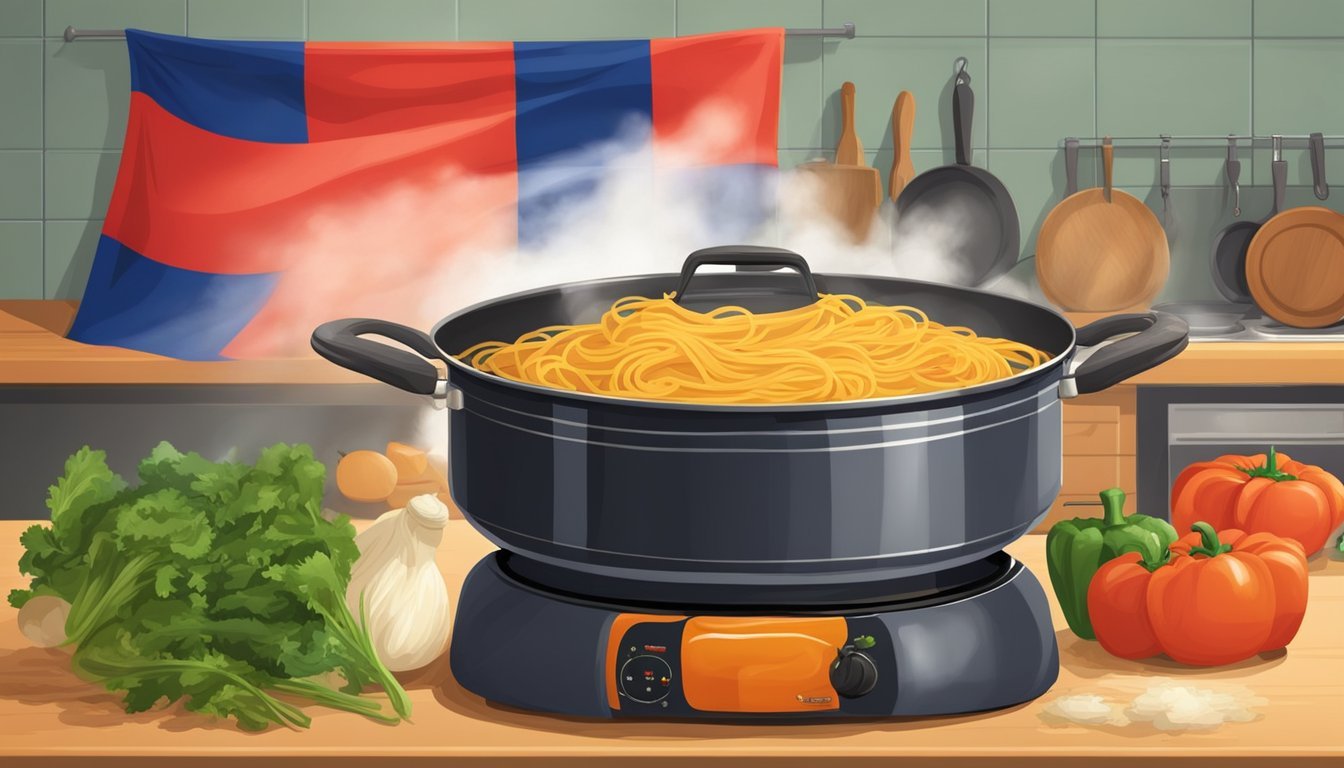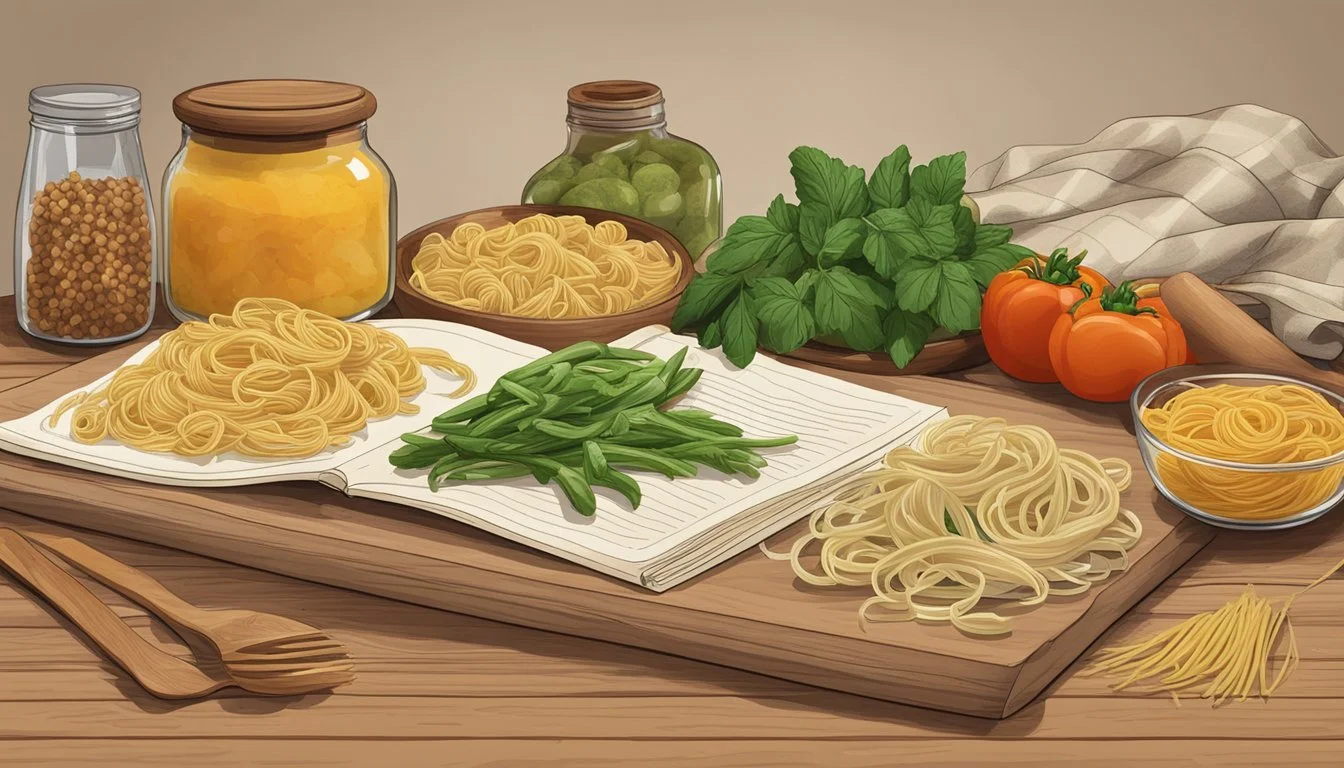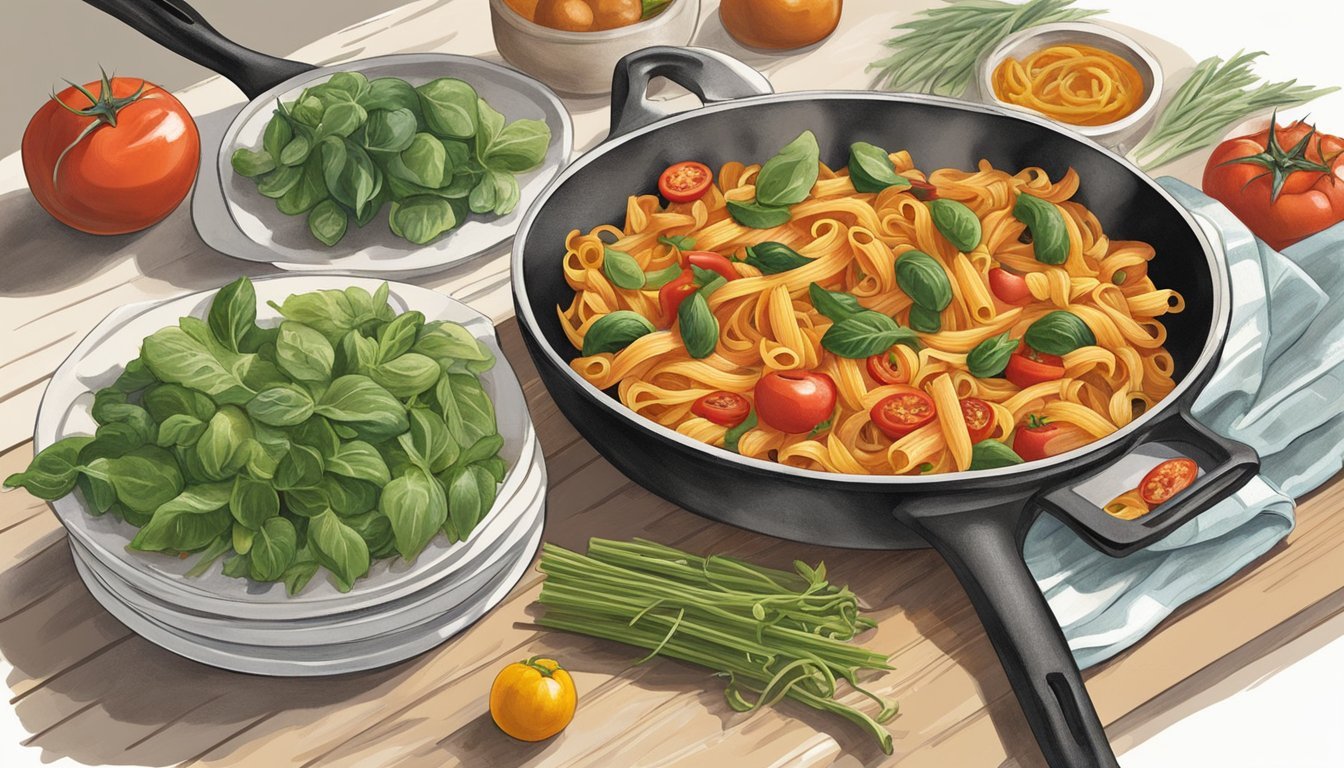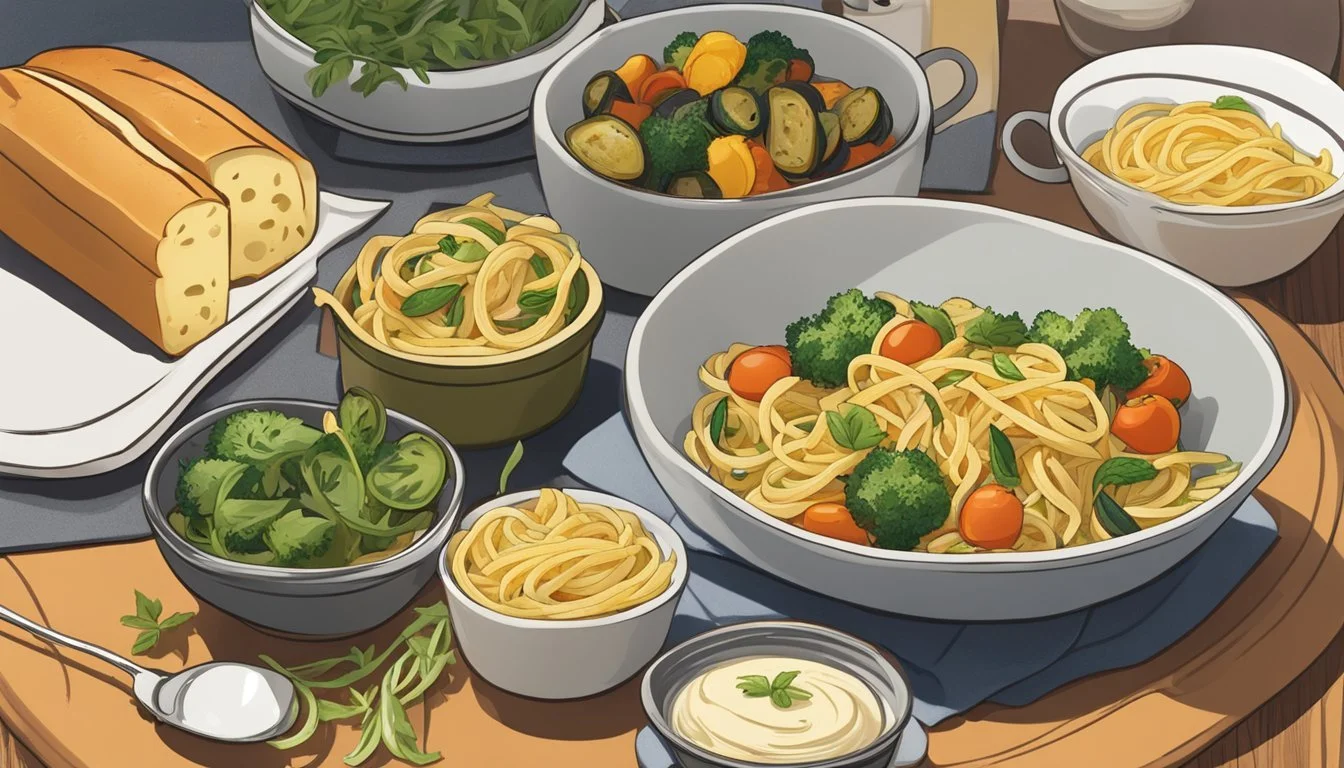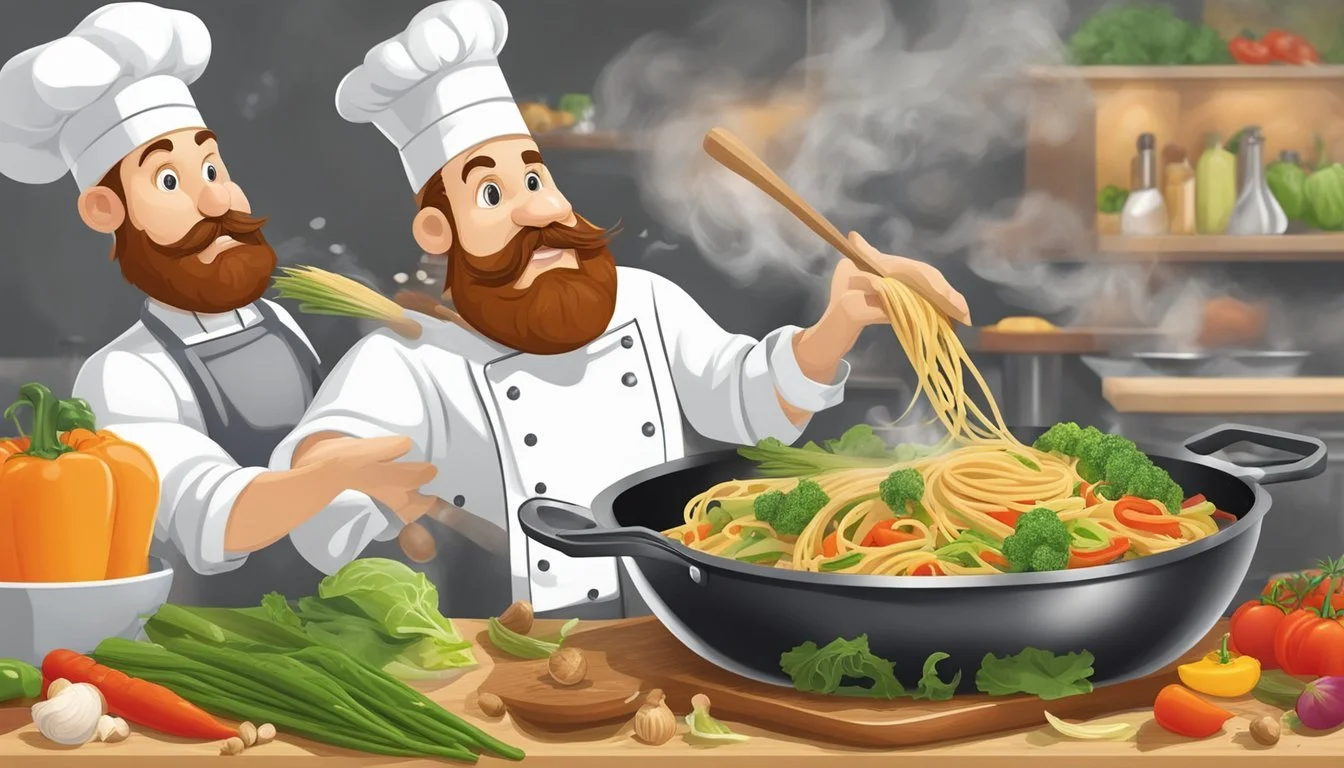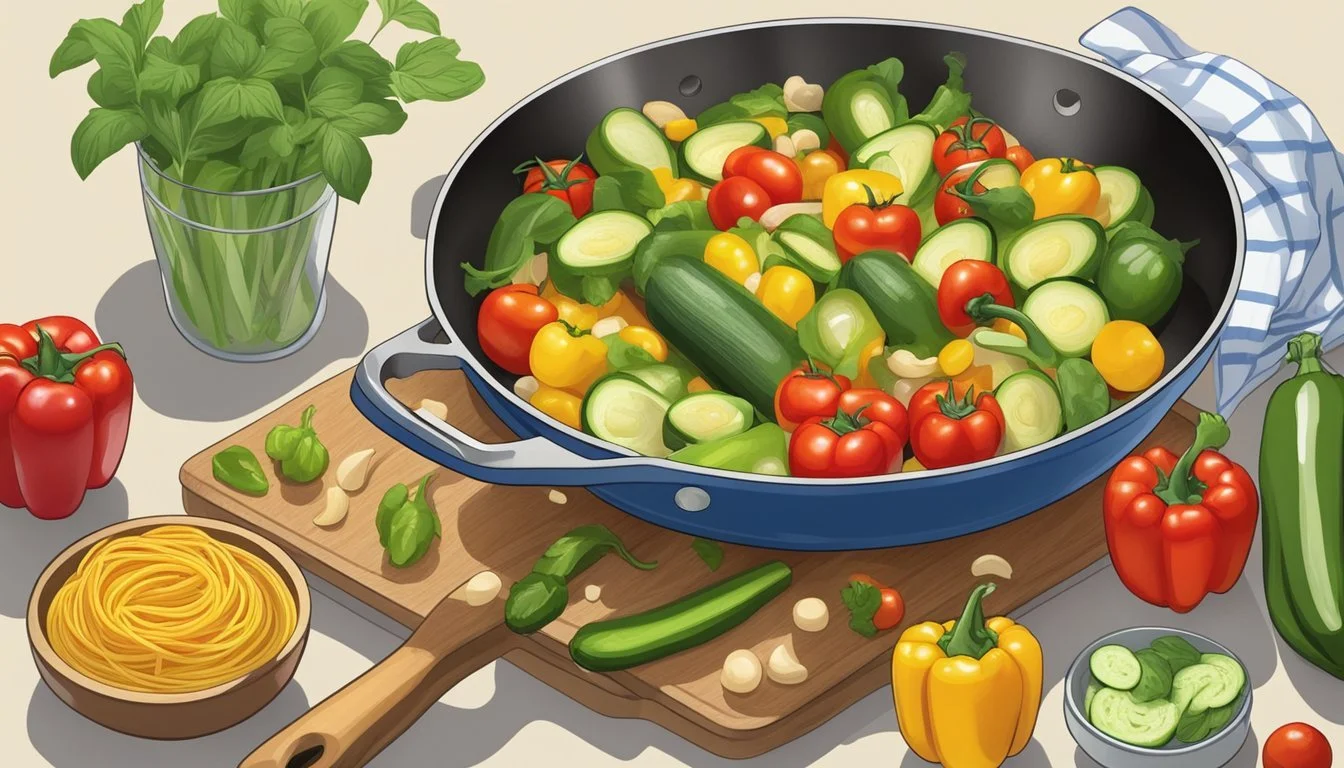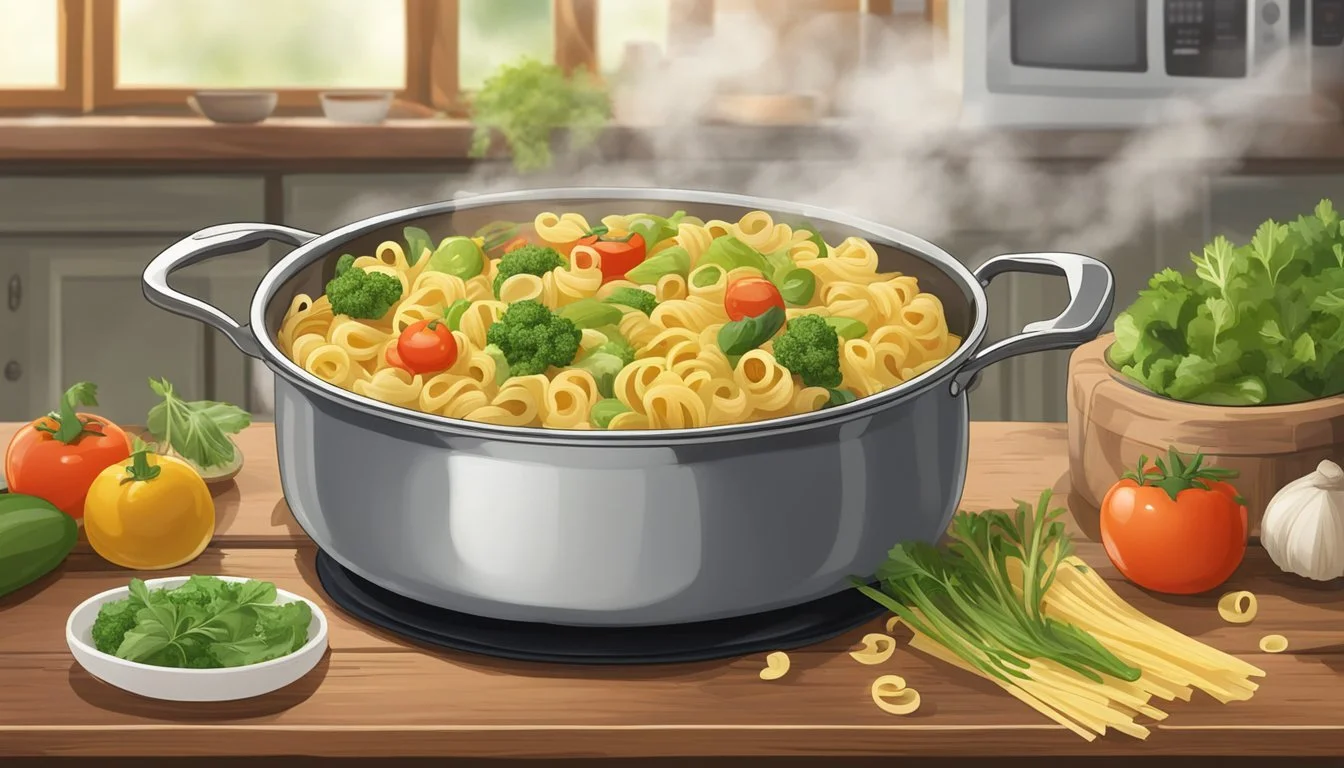How to Prepare Texas-Style Pasta Primavera
A Step-by-Step Guide
Pasta (What wine goes well with pasta?) Primavera (What wine goes well with pasta primavera?) is a dish celebrated for its simplicity and the abundance of fresh vegetables, but giving it a Texas-style twist incorporates bold flavors that are synonymous with the Lone Star State. The traditional recipe, known for its healthful blend of colorful veggies and pasta, receives a hearty update through the use of ingredients such as smoked meats (What wine goes well with smoked meats?) and a hint of spice. This not only adds depth to the nutrition profile but also satisfies the craving for a dish that's both nourishing and full of flavor.
When creating a Texas-Style Pasta Primavera, the key lies in selecting the right vegetables that can stand up to the robust seasonings while maintaining their crisp-tender texture. Seasonal produce including peppers, squash, and onions are sautéed to perfection and become the vibrant base of the dish. Nutrition information generally highlights the benefits of such a vegetable-packed meal, rich in vitamins and fibers, and when adapted to the Texas-style, it retains these health qualities even with the introduction of bolder, smokier flavors.
Pairing the colorful array of vegetables with a creamy or tomato-based sauce infused with Texan spices brings this dish to its crescendo. Whole-wheat pasta can be selected for an extra fiber boost, and lean proteins such as grilled chicken or shrimp (What wine goes well with shrimp?) may complement the hearty vegetables to round out the meal. The result melds the essence of traditional Pasta Primavera with the unmistakable character of Texas cuisine, making for a recipe that's both familiar and excitingly new.
Choosing the Right Ingredients
For a Texas-style Pasta Primavera, selecting quality ingredients is crucial. The dish should be brimming with fresh produce, a hearty choice of protein, and flavorful seasonings to satisfy the Lone Star State's love for bold flavors.
Pasta Selection
Whole Wheat Penne: Offers a robust texture and is perfect for holding onto the sauce and veggies.
Angel Hair Pasta: A thinner choice for a lighter fare, though less traditional for a primavera.
Spaghetti: A classic option that pairs well with the vegetables and sauce.
Fresh Vegetables
Broccoli: Florets should be fresh and vibrant green.
Asparagus: Choose firm, bright green stalks with tight tips.
Carrots: Opt for medium-sized, smooth, and firm carrots.
Tomatoes: Ripe yet firm to touch; cherry tomatoes can add a burst of flavor.
Zucchini and Mushrooms: Fresh, without any blemishes, for a hearty bite.
Spinach: Dark green leaves indicate freshness.
Onions and Garlic: The backbone of flavor, ensure they are firm and aromatic.
Protein Choices
Ground Beef: Lean beef will provide a rich, meaty depth to the dish.
Shrimp: Fresh or frozen and deveined; they should smell of the sea, not fishy.
Herbs and Seasonings
Basil and Italian Seasoning: Fresh or dried, these are essential for an authentic flavor.
Salt and Pepper: Use to taste, but be mindful of the balance with other ingredients.
Garlic: A must for its pungent flavor that complements the protein and vegetables.
Each choice contributes to the overall symphony of flavors that define a hearty Texas-style Pasta Primavera. By focusing on the quality and freshness of these components, the dish can truly shine.
Preparing Your Ingredients
To ensure your Texas-Style Pasta Primavera is bursting with both flavor and texture, a chef must carefully prepare each element. One begins by tending to the vegetables and proteins before mastering the pasta cooking technique.
Vegetable Prep
A chef washes and chops an assortment of fresh vegetables, emphasizing those found in Texas gardens. Bell peppers and red onions should be sliced into thin strips to allow for even cooking. Squash, zucchini, and asparagus require cutting into bite-sized pieces. One should always aim for a tender-crisp texture, which can be achieved by sautéing in a deep skillet or roasting in an oven for a slight char.
Wash all vegetables to remove residue.
Chop vegetables uniformly to ensure consistent cooking.
Sauté or roast in the oven for the best texture.
Meat and Protein Prep
If including meat, a chef may opt for proteins such as grilled chicken or shrimp, infusing them with robust Texan flavors. The meat should be seasoned with a spice blend, and grilled to enhance its smokiness – a signature touch in Texas cuisine. One ensures the protein is tender and juicy by not overcooking it.
Season meat generously with Texas-style spices.
Grill chicken or shrimp to achieve a smoky flavor.
Monitor closely to maintain tender textures.
Pasta Cooking Technique
Cooking pasta is a straightforward process, yet it demands attention to detail for the perfect al dente texture. A chef needs to bring a large pot of salted water to a boil before adding the pasta. Stirring occasionally prevents the pasta from sticking, and it's crucial to boil the pasta according to the package instructions until tender yet firm.
Boil water in a large pot and season with salt.
Cook pasta until al dente, then drain.
Reserve some pasta water for adjusting the sauce's consistency.
Cooking the Perfect Sauce
Creating an exceptional sauce is essential for a Texas-Style Pasta Primavera. The sauce binds all the ingredients together, infusing the dish with bold flavors and a creamy texture. Two quintessential variations are the Texas Ragu Basics, offering a rich tomato base, and the Creamy Avocado Twist, which introduces a luxurious smooth finish.
Texas Ragu Basics
A traditional Texas Ragu elevates the pasta by incorporating a robust tomato base made with quality extra virgin olive oil. It starts with a mirepoix—a mix of finely chopped vegetables—that's gently sautéed in the oil. To this, peeled and seeded tomatoes are added, sometimes with a touch of beef or chicken fat for depth. The tomatoes are cooked down slowly into a thick, hearty ragu, occasionally enhanced with a splash of red wine.
Ingredients:
Extra virgin olive oil: 2 tablespoons
Onions, carrots, and celery: (how long does celery last?) 1 cup (diced)
Tomatoes: 4 cups (peeled, seeded, and chopped)
Beef or chicken fat: 1 tablespoon (optional)
Red wine: 1/4 cup (optional)
Instructions:
In a large pan, heat olive oil over medium heat.
Add diced onions, carrots, and celery; cook until softened.
Stir in tomatoes and fat, simmering for at least 30 minutes.
For added flavor, include red wine and let the sauce reduce.
Creamy Avocado Twist
For a Creamy Avocado Twist, blending ripe avocado with cream creates a velvety sauce that's distinctive to the Texas-Style Pasta Primavera. The mildness of the avocado allows other flavors to shine through, while its creaminess adds a decadent aspect to the dish. It's essential to use ripe avocados and puree them with high-quality cream, a squeeze of lemon to preserve the green color, and a pinch of salt to taste.
Ingredients:
Avocado: 2 ripe, pitted and scooped
Heavy cream: 1/2 cup
Lemon juice: 1 tablespoon
Salt: to taste
Instructions:
Combine avocado and cream in a blender.
Blend until smooth, adding lemon juice and salt while blending.
Taste and adjust seasoning as necessary.
The sauce can be drizzled over pasta or mixed in for an evenly coated dish.
Combining Ingredients and Flavors
To prepare a Texas-style Pasta Primavera, the process of combining ingredients and flavors is paramount. It begins with a selection of vibrant veggies, often including bell peppers, zucchini, and red onions. They are sautéed on the stove top in a large skillet to achieve a sweet, caramelized exterior while preserving a crisp-tender texture.
The Cheese (how long does cheese last?) Trio: The heart of Texas-style is its robust flavor, magnified by a trio of cheeses—Parmesan, mozzarella, and feta—each chosen for their unique properties:
Parmesan Cheese: Adds a nutty and salty depth.
Mozzarella: Contributes a glorious melt and creamy consistency.
Feta: Offers a tangy kick that complements the vegetables.
Lemon Zest & Juice: To balance the richness, fresh lemon zest and juice are introduced. Their citrus notes cut through the cheese's creamy dominance, injecting a refreshing zest into the dish.
Herb Highlights: Fresh basil is essential, infused towards the end of cooking, providing an aromatic lift that ties the Texas and Mediterranean flavors together. Its peppery yet sweet profile is a natural pair for the zing of lemon and underlying cheese notes.
Color and Flavor: The color palette of the dish mirrors the boldness of Texas spirit—a delightful array of reds, greens, and yellows that serve as a feast for the eyes. When assembling this dish on the stove top, one must consider the balance of flavor and color—aiming for a harmony that's both nuanced and enticing.
In sum, the careful melding of cheeses, lemon, and fresh basil with the sautéed veggies is the quintessence of Texas-style Pasta Primavera: a confident blend of color, flavor, and texture.
Finishing Touches and Presentation
Once the Texas-style Pasta Primavera has been masterfully cooked, the final garnishes and the presentation can significantly enhance the dish's appeal and flavor profile.
Garnishing Tips
The use of fresh garnishes adds both color and dimension to the dish. Chefs often recommend:
Cheese: A generous sprinkle of bold cheddar or smoky gouda complements the Texan theme.
Fresh Basil: For a fresh burst, finely chiffonade basil leaves and distribute them evenly.
One can also introduce some heat with a light dusting of cayenne pepper, while a crack of black pepper serves both for heat and aesthetics.
Plating Techniques
When plating, one should:
Present on a warm plate to maintain the pasta's temperature.
Utilize a twirling fork method to nest the pasta, creating height and showcasing the colorful vegetables.
A slice of lemon can be placed on the side, not only for a pop of color but also to allow guests to add an acidic brightness to their dish as desired.
Side Dishes to Complement Your Pasta
A carefully chosen side dish can elevate the Texas-style Pasta Primavera to a complete culinary experience. The side dishes should balance the flavor and texture of the pasta while respecting the integrity of a hearty Texas meal.
Green Salad Options
Classic green salads serve as a refreshing counterpoint to the rich flavors of a Texas-inspired Pasta Primavera. They can be a simple mix of lettuce, spinach, and other greens from the fridge, or a more elaborate blend with an array of veggies. Here are two recommended combinations:
Spinach and Arugula Salad:
Spinach
Arugula
Cherry Tomatoes
Cucumber slices
Dressing: A tangy balsamic vinaigrette or a ranch dressing with a hint of barbecue flavor.
Crisp Texas Coleslaw:
Green Cabbage
Carrots
Jalapeños (optional for an extra kick)
Dressing: A creamy buttermilk dressing with a touch of cumin for that Texas flair.
Bread Choices
Hearty bread can be a delightful companion to pasta, giving guests an option to sop up any remaining sauce. Here are two breads that can complete the meal:
Garlic Biscuits:
Buttery, soft, and infused with garlic, these biscuits complement the pasta without overpowering it.
Cornbread:
A square of moist cornbread, perhaps with jalapeños baked in, offers a traditional Texan flavor that stands strong beside the pasta.
Adjustments for Dietary Restrictions
When preparing Texas-style Pasta Primavera, one can easily modify the recipe to suit vegetarian, vegan, and gluten-free diets without compromising the dish's hearty flavors and textures.
Vegetarian Variations
For a vegetarian version of Texas-style Pasta Primavera, it's important to focus on replacing traditional protein sources with vegetarian options. One may consider incorporating eggs or cheese for added protein and richness. A selection of beans, such as black or pinto, can also be added for protein and fiber. If opting for cheese, choosing sharp cheddar or pepper jack can maintain the bold Texan flavors.
Vegan Alternatives
To alter the recipe for a vegan diet, one should eliminate all animal products. This includes replacing dairy with plant-based options. Nutritional yeast or vegan cheese can substitute for parmesan to provide a cheesy flavor, while avocado oil or vegan butter can be used in place of regular butter. Tofu, tempeh, or seitan (What wine goes well with seitan?) can serve as protein replacements, effectively absorbing the dish's characteristic spices and seasonings.
Gluten-Free Adaptations
Adapting the dish to be gluten-free requires the substitution of standard pasta with gluten-free pasta, making sure it's cooked al dente to maintain texture. When thickening sauces, chefs might opt for gluten-free flour mixes or cornstarch. To ensure the gluten-free integrity of the dish, it's essential to verify that all packaged ingredients, such as seasonings or condiments, are labeled gluten-free.
Nutritional Breakdown
Texas-style Pasta Primavera is a vibrant dish incorporating a medley of vegetables and a creamy, flavorful sauce. Each component contributes its own set of nutrients to the dish, and below is a breakdown highlighting key nutritional aspects:
Calories:
A serving of Texas-style Pasta Primavera typically contains approximately 300 to 500 calories, depending on the portion size and specific ingredients used.
Fats:
Total Fat: Ranges from 10 to 20 grams, with variations based on the type of oil or butter used.
Saturated Fat: Typically around 3 to 5 grams; influenced by dairy products in the sauce.
Trans Fat: Minimally present if natural ingredients are used.
Polyunsaturated and Monounsaturated Fat: Present in varying amounts from olive oil or other plant oils used for sautéing the vegetables.
Cholesterol:
Due to the presence of dairy, cholesterol may range from 10 to 50 milligrams per serving.
Sodium:
Sodium levels can vary widely but are often around 300 to 600 milligrams, mostly attributed to salt seasoning and cheese.
Carbohydrates:
Total Carbohydrate: Approximately 40 to 60 grams, mostly from pasta and vegetables.
Dietary Fiber: Around 4 to 6 grams, from vegetables like broccoli, bell peppers, and zucchini.
Sugars: Typically low, natural sugars from the vegetables.
Protein:
Each serving contains about 10 to 15 grams of protein from the pasta and possibly cheese or a protein addition.
Vitamins and Minerals:
A variety of vegetables contribute vitamins A and C, iron, potassium, and other nutrients. Potassium levels may range from 200 to 400 milligrams. Iron content varies but is generally enhanced by the vegetables.
Calories from Fat:
This comes to about 90 to 180 calories from fat, assuming 10 grams of total fat per serving at 9 calories per gram.
It should be noted that these values are averages and will fluctuate based on the specific ingredients and their amounts in the recipe.
Storing and Reheating
When storing leftovers of Texas-style Pasta Primavera, it’s important to do so properly to maintain freshness. They should cool to room temperature before being placed in the refrigerator. Leftovers should be stored in an airtight container to preserve flavor and prevent contamination. Pasta Primavera can be safely stored in the fridge for up to 3-4 days.
Reheating should be done with care to ensure the dish remains just as appetizing as when freshly made. To reheat, one has the option of using either the microwave or the oven.
For the microwave:
Transfer the portion to a microwave-safe dish.
Sprinkle a little bit of water on top to ensure the pasta doesn’t dry out.
Cover with a microwave-safe lid or a damp paper towel.
Heat on medium power, stirring every minute, until thoroughly warmed.
For the oven:
Preheat the oven to 350°F (175°C).
Place the pasta in an oven-safe dish and cover with aluminum foil.
Heat for about 10-15 minutes, or until completely heated through.
Using the oven is recommended for larger portions or for those desiring a less soggy texture. Both reheating methods should focus on achieving an even temperature throughout the dish without overcooking the vegetables or pasta. Always check that the reheated food has reached a safe temperature of 165°F (74°C) before serving.

